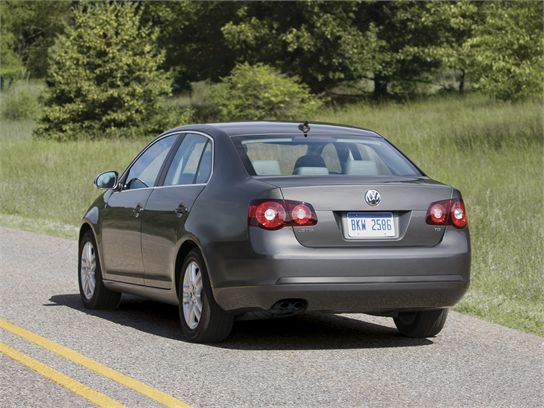Recent Articles
Popular Makes
Body Types
5 Reasons You Might Buy a 2010 Honda Insight
Honda's latest hybrid has what it takes to break up the Prius party.
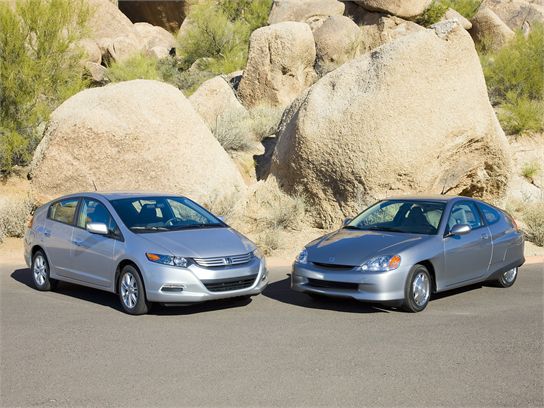
Remember when Honda had the first hybrid on the scene in 1999? The tiny two-seater Insight returned spectacular gas mileage, but it wasn't practical enough for the masses and looked a little funky with its aerodynamic rear wheel covers. Then Toyota came up with the Prius and stole the show, leaving the Insight to languish and finally disappear in 2006. For 2010, the Honda Insight is back with four doors and room for five, and it's ready to win you over. Here are five reasons it might.
Photos courtesy of Honda.
Page 2
Starting at just $19,800, the Insight undercuts both the cheapest Toyota Prius ($22,400) and Honda's own Civic Hybrid ($23,800) by several thousand dollars. And if you step up to more lavishly-equipped trim levels with navigation systems and premium stereos, the difference grows even larger. While the Insight's EPA estimated mpg of 40 city/43 hwy falls short of the Prius' 50 city/48 hwy and the Civic Hybrid's 40 city/45 hwy, if you actually do the math you'll find it would take many years to spend their differences in price ($2,600+) on the extra gas for the Insight. And don't forget that the EPA numbers are only estimates. Some real-world tests of the Insight have returned as much as 63 mpg!
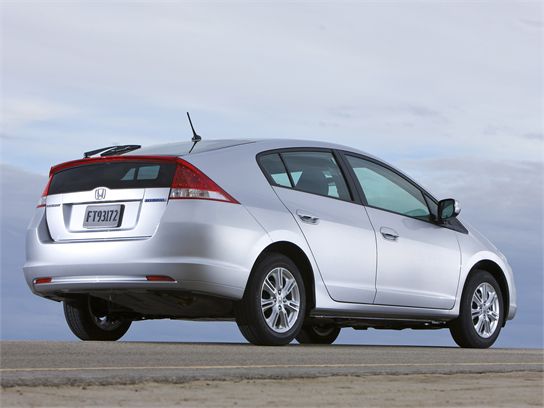
Page 2
The new Insight features Eco Assist, a set of ingenious mechanisms designed to help you hypermile. Hypermiling is the act of maximizing the amount of miles you can squeeze from a tank of gas. One component of Eco Assist is a green ECON button on the dash. When pressed, it automatically helps increase fuel economy by conserving energy from various vehicle systems; the engine will shut off more often when it would otherwise be idling, the air conditioner and heater are limited, throttle response is reduced, and regenerative braking is increased. The other component of Eco Assist is a driver feedback system that relies on information displays. A color-changing display behind the speedometer turns green when you drive efficiently, or blue when you need to take it easier on the gas pedal. Complementing this is a Multi-Information Display (MID) that shows current fuel economy, an Eco Guide gauge that indicates when you accelerate or brake too aggressively, little digital leaves that accumulate the more efficiently you drive, and even an Eco Score that appears at the conclusion of your drives. It all adds up to a game-like experience with real life impact on the environment (and your bank account).
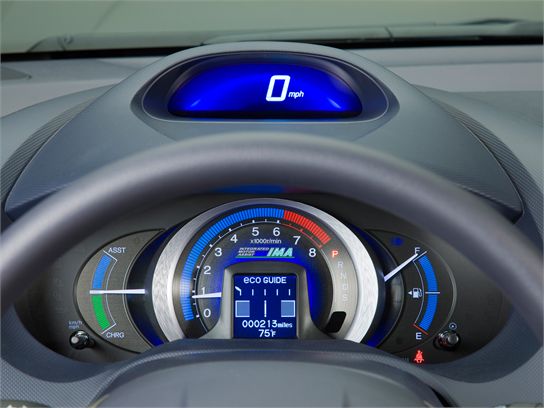
Page 2
Most hybrid buyers don't expect a ton of zip, oomph or driving excitement, and they shouldn't expect it from the Honda Insight either. But Honda usually includes at least a modicum of driver engagement with all its vehicles, and the Insight is no exception. With responsive steering, a taut ride and a firm brake pedal, it's more involving than piloting a Prius and offers more low-end torque, too. Power transitions from the electric motor to the gas engine are practically imperceptible, so it doesn't feel like you're driving a hybrid. Plus, the Eco Assist "game" is ready for playing every time you slip behind the wheel, which helps pull you closer into the driving experience.
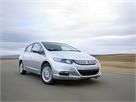
Page 2
Unlike the Honda Civic, but exactly like the Toyota Prius, the Insight comes only with a hybrid drivetrain and an unmistakable shape. As it turns out, people seem to like driving cars that are instantly recognizable as hybrids. Sure, saving money on gas and reducing our dependence on oil are important factors, too. (Not to mention driving solo in the carpool lane if you live in California.) But let's be honest — getting behind the wheel of a hybrid like the Insight is the modern day equivalent of driving a Volkswagen Microbus with a peace symbol stuck on the back.
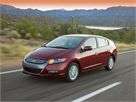
Page 2
It's obvious that the 2010 Honda Insight is aimed directly at the success of the Prius, and it's taking some flack for being such a look-alike. Maybe the resemblance was intentional, but does it really matter? The fact is, the overall shape of both the Prius and the Insight is the most practical and efficient design for a passenger vehicle trying to maximize fuel economy. Wind tunnel testing shows it's the most aerodynamic form, and the more easily a car slips through the air, the less fuel it will need to push through it. Even going beyond shape, the Insight improves in places the Prius falls short; driver position, lower price and less hybrid-like driving dynamics all help raise the Insight onto a pedestal of its own.
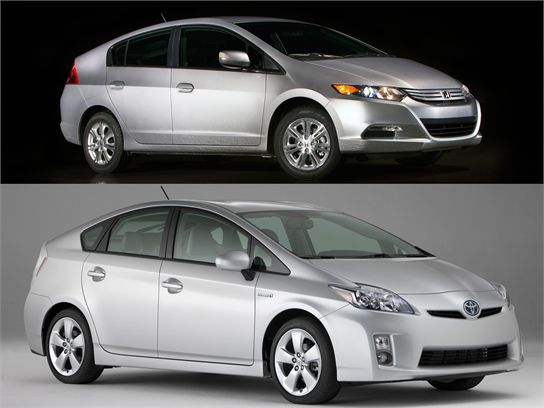
Page 2
Naturally, the ubiquitous Toyota Prius is the Insight's closest competitor. It offers slightly better fuel economy, a more compliant ride and a roomier back seat, but like we mentioned earlier, it does come with a fairly significant price premium. The Honda Civic Hybrid is another more expensive, yet less conspicuous path to higher fuel efficiency. It has a bit more horsepower which is ultimately cancelled out by its heavier curb weight, and the Civic Hybrid has over 5 cu. ft. less cargo space than the Insight. If you don't want the hybrid halo and are just looking for good gas mileage, the Volkswagen Jetta TDI clean diesel comes in sedan (pictured) or wagon and offers up to EPA est. 42 mpg on the highway and 34 mpg combined with city driving. The Jetta TDI starts in the $22,000 range. For now, there's no winning the fuel-sipping-family-sedan price war against the 2010 Honda Insight.
